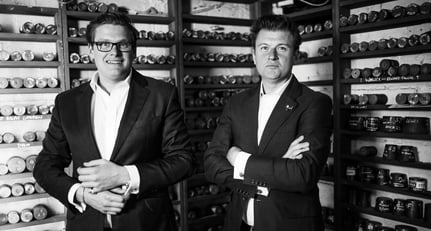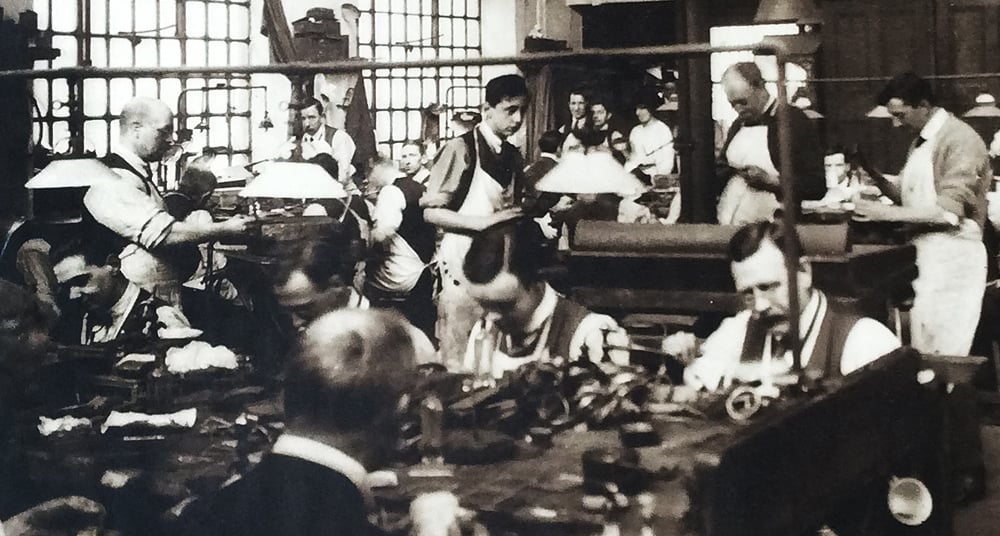
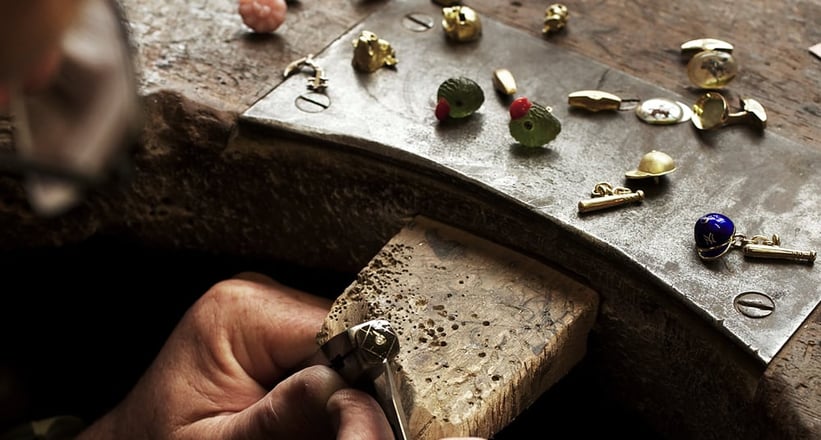
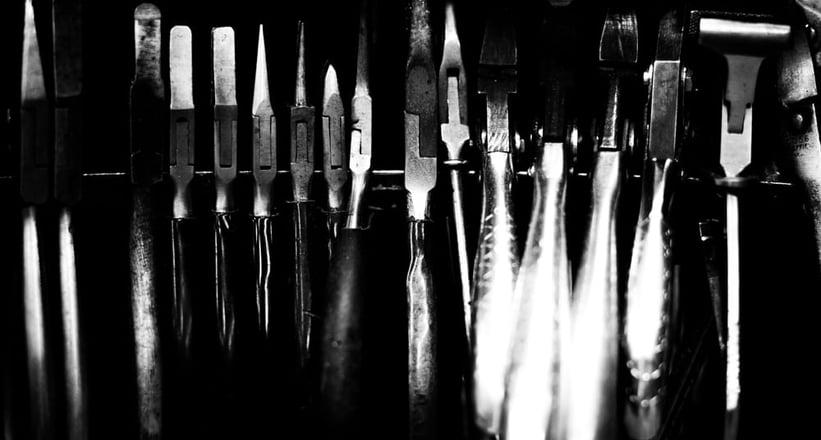
As family fables go, the Deakins’ is a good one. In 1430, a ship bound for England bearing a royal personage was attacked by pirates. Flanking the ship on both sides, the assailants cast hemp ropes towards the vessel and began their assault. Before they could lay claim to their bounty, an axe-wielding Deakin appeared; working his way down the ship, he slashed at the ropes until the ships parted and the pirates fell into the sea. Two years later, in honour of the heroic act, the Deakins were granted a family crest – an arm appearing out of a crown holding an axe. James and Henry, the legend’s latter-day heirs, have the paperwork to prove it. It rests behind glass at the brothers’ cufflink-producing, Birmingham-based headquarters; a shrine to traditional manufacturing techniques that shelters three centuries of family history. Two hundred and twenty-eight years after the company was founded, originally as a jeweller and silversmith, Deakin & Francis might just make the world’s best cufflinks.
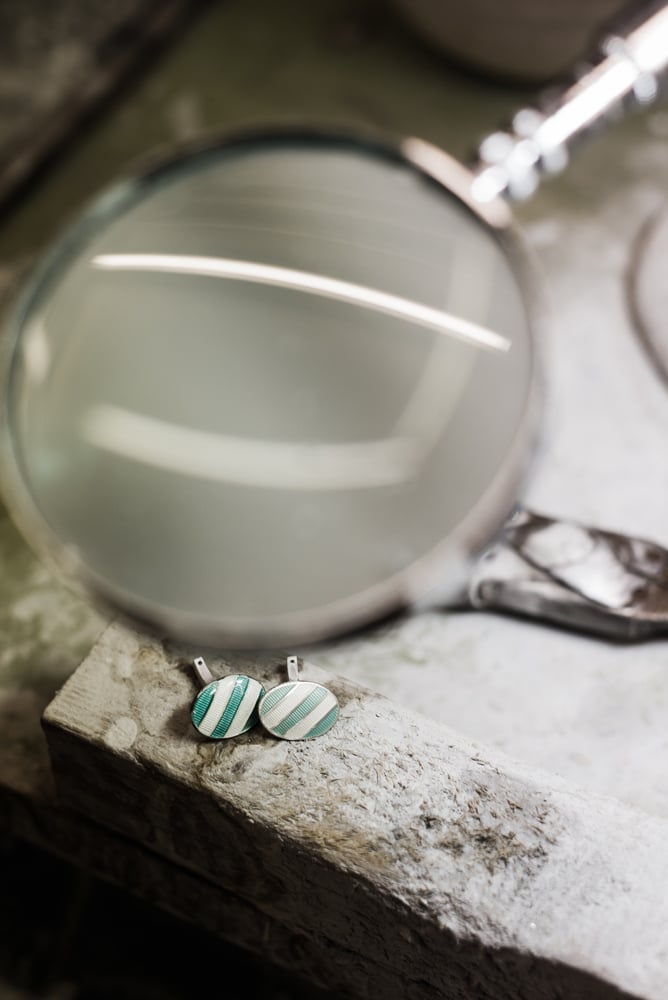
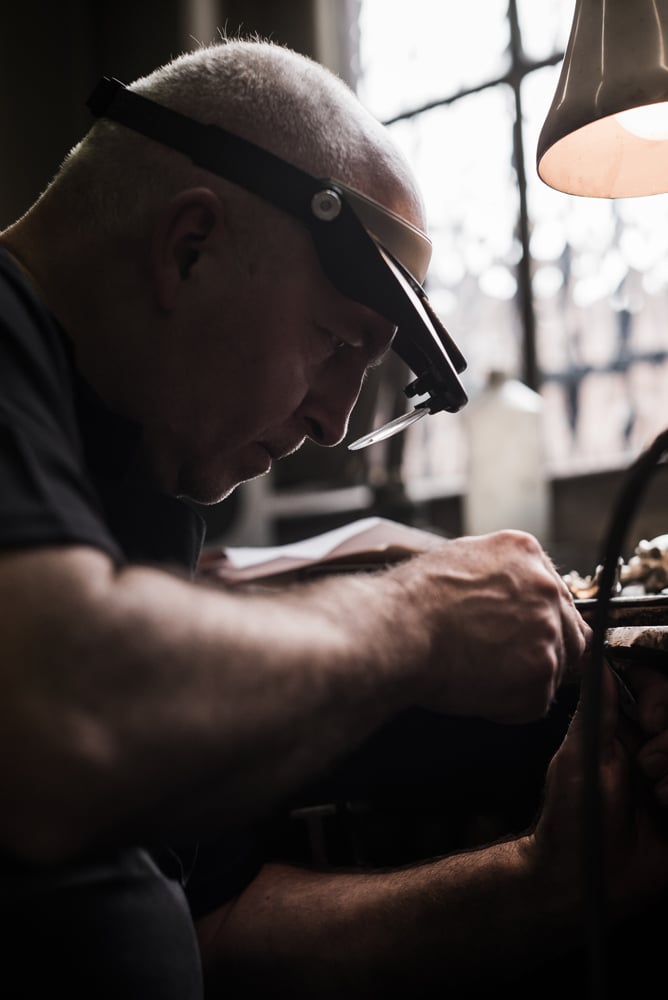
The company holds contracts with some of the most prestigious names in fashion; high-end, household names that, for reasons of discretion, I’ve been asked not to print here. It has welcomed bespoke commissions from politicians and pop-stars, rock-stars and royalty. Deakin & Francis could well be Britain’s best-kept secret – a fact that rather irritates the company’s current custodians. “It’s about the most annoying thing you can hear after being in business for more than two centuries,” says Henry, the great, great, great-nephew of the co-founder, Charles Washington Shirley Deakin. “That’s why we’ve recently started a branding exercise; pushing our own boxes, lasering ‘Deakin & Francis’ on the stems of each cufflink and moving towards high-end retailers who want to take us on as a brand.”
Now, every Deakin & Francis cufflink box appears with an axe coming out of a crown stamped on its side. “The packaging, the box, the name, the history; it’s improved sales no end,” says James. The brothers took over the company from their father David more than a decade ago. Both are fully qualified, James having studied at the Gemological Institute of America as a jeweller gemologist, and Henry having graduated as a gemologist and designer from the International Gemological Institute in Vicenza.
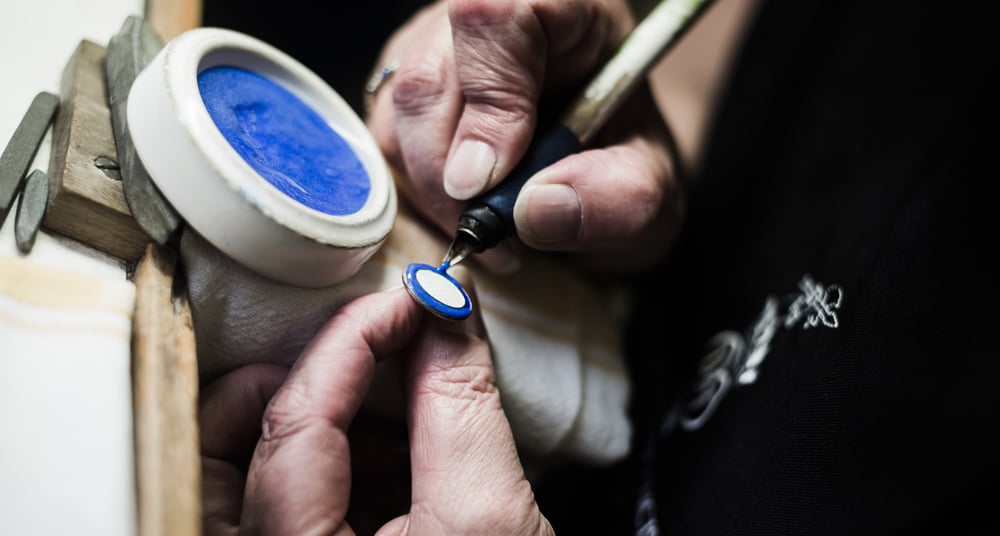
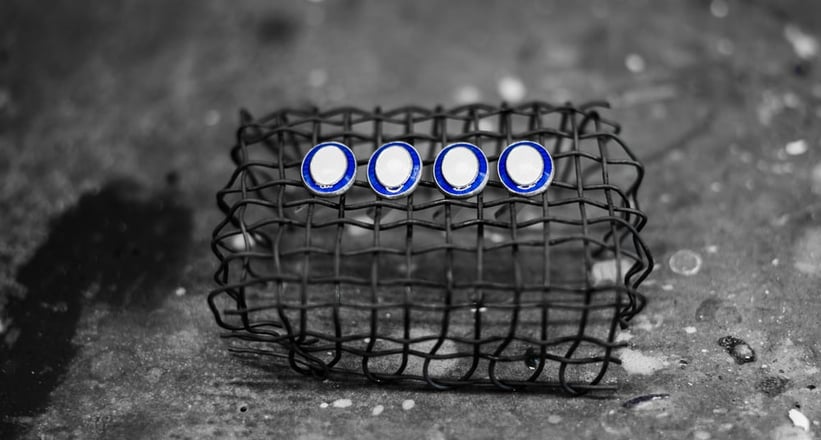

Following the duo around their factory, which is based in Birmingham’s historic jewellery quarter, it’s clear that the business has never veered from the high standards of craftsmanship and quality that are its tradition. Everything from signet ring-stamping, shaping and finishing, to stone-mounting and the production of special-commission pieces is done by hand; model-makers create new designs from hand-drawn sketches; enamellers use methods that date back to the pharaohs; and engravers carve initials and family crests under microscopes. The workshop acts as a window onto Britain’s manufacturing past. Yet while the way it produces its inventions may remain true to the past, the cufflinks it creates are nothing if not cutting-edge contemporary. From snakes and skunks to skulls and shotguns, you name it, Deakin & Francis has made it. It’s the embodiment of the type of tongue-in-cheek humour that’s become central to the brand.
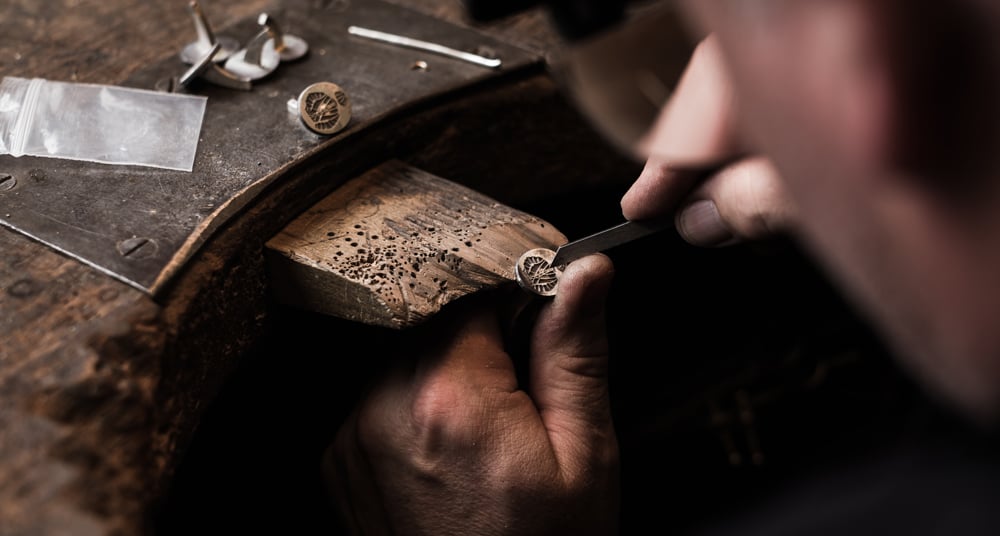
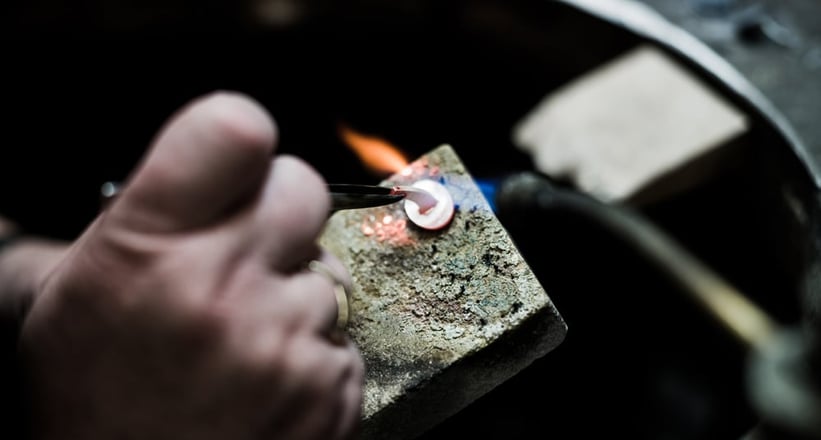
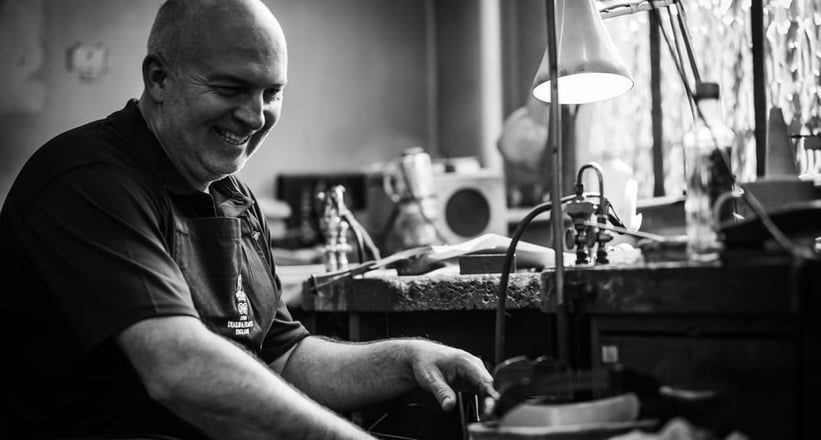
“When you think of personality traits that define Britons, one of the first things you think of is eccentricity,” says James. “Some of our pieces are quite out there. When it comes to jewellery, there is a limit to what a guy can wear, so it’s a way of having a bit of fun. Cufflinks are a way of expressing your mood, your personality or what you’re about on a particular day.” So which pair of cufflinks does the company sell most of ? “The skulls have done brilliantly for us,” says Henry. “We tend to sell along three main categories: the classic enamels, the three-dimensional pieces and the 18-carat designs. The vitreous-enamel designs form the main part of our silver collection. They’re beautiful; you cannot question the quality of the enamel and the brightness of the colours. But when you see a skull with a red bandana, a moving jaw and rubies for eyes, it certainly has the wow factor” – which is exactly what so many of the company’s creations evoke.
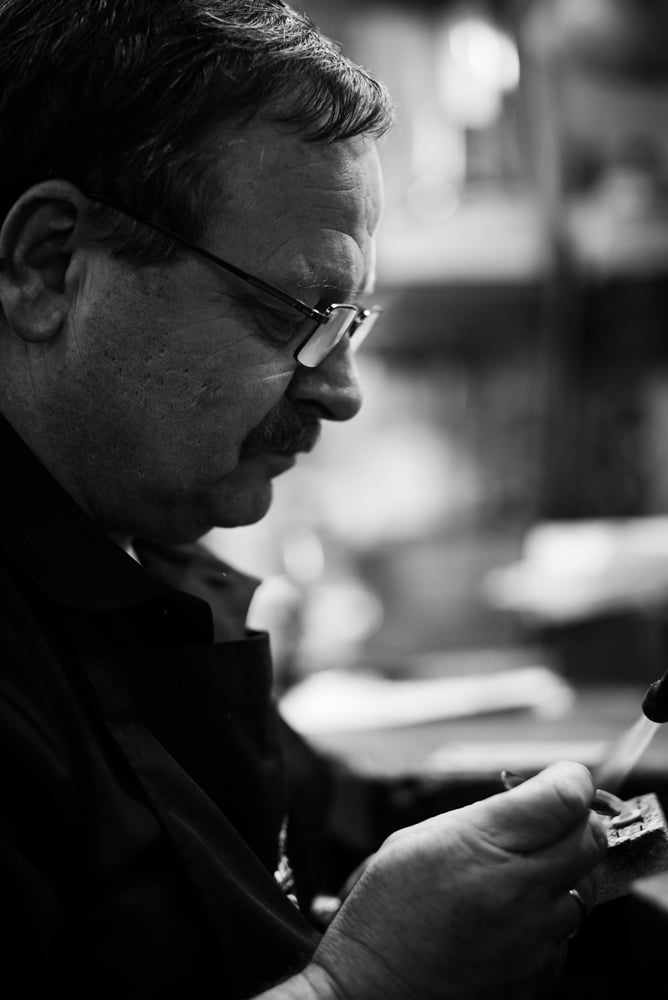
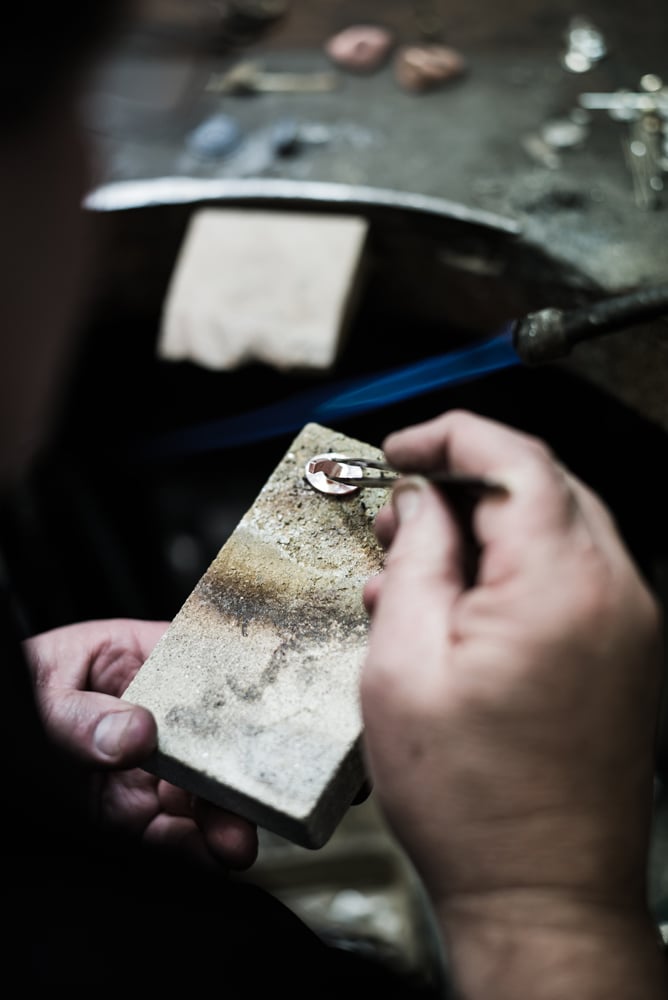
A pair of cigar-box cufflinks, just one illustrious example, are made from 18-carat yellow-gold, are hand-painted with enamel and feature a miniature, gold cigar-link fitting. The perfect Christmas gift for any true cigar connoisseur, the Romeo y Julieta-illustrated pieces are yours for £11,260. Then there’s the white-gold skull cufflinks with purple velvet and diamond-encrusted crown. Made to mark The Queen’s Diamond Jubilee, the total weight of diamonds in each pair totals 0.40 carats. Only 12 were produced. Prepare to part with £9,075 if you want a pair.
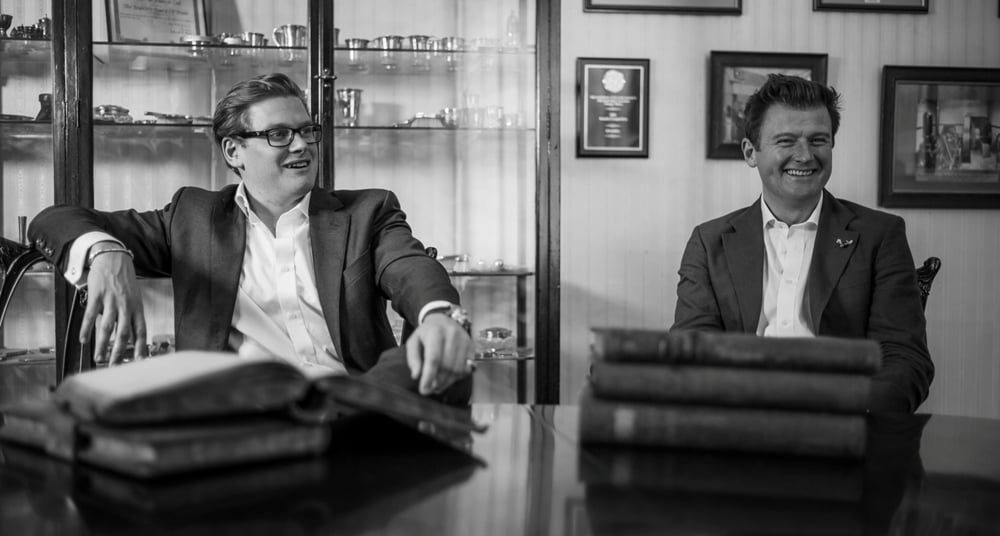
The appetite for all things D&F is global. Sales in the UK are increasing, Asia is its fastest-growing market and America remains where most of its creations are sent. With the brand’s foray into leather goods also going so well, it can’t be long until the world welcomes its first standalone Deakin & Francis store, surely? “It’s in the plan,” says Henry. “But it’s not going to happen this year. We want to continue to grow slowly and organically. We are in-store in many high-end department stores around the world and it’s something that we’d love to take off with at some point. London and New York would be the obvious choices.” As my tour of D&F HQ comes to its conclusion, I consider that peculiar crest now stamped on every box. “The spikes of the crown are sails from a ship,” says James. “The family motto is ‘strike Deakin, the devil is in the hemp’.” For the modern-day brand, perhaps that should be ‘the devil is in the detail’ – and for as long as that remains the case, Deakin & Francis will continue to be the purveyor of choice for dandies in the pursuit of some consummate cuff candy.
Text: Richard Brown
